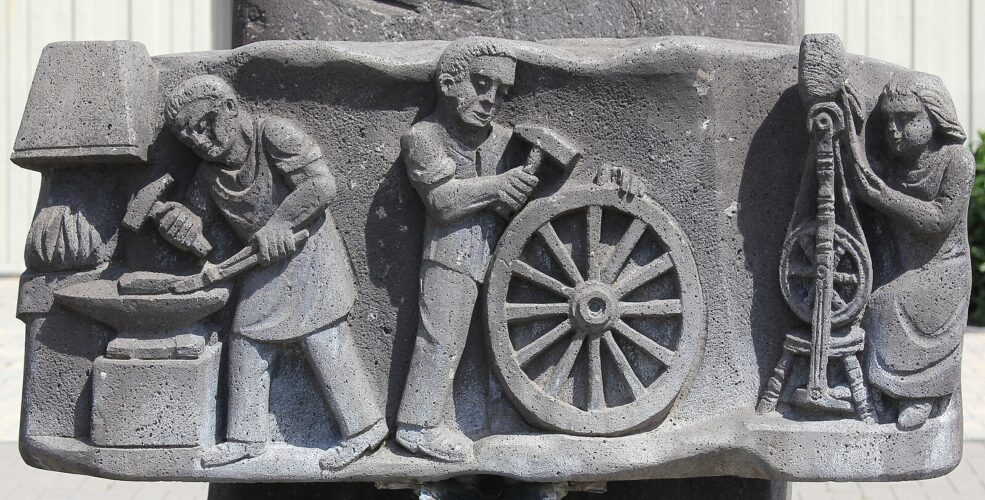Welcome to a journey through the annals of history, where ancient ingenuity meets modern fascination. From mechanical marvels to enigmatic manuscripts, ancient civilizations left behind a legacy of technology that continues to captivate us. These remarkable inventions, born from necessity and curiosity, demonstrate the incredible resourcefulness of our ancestors. These masterpieces, crafted with precision, showcase the advanced knowledge and skills possessed by the ancient engineers, artisans, and scholars.
From the towering structures of ancient Egypt to the sophisticated machinery of ancient Greece, each example highlights the impressive achievements of civilizations long gone. Unravel the secrets of ancient technology and uncover why they still outshine many contemporary inventions. Prepare to be amazed by the timeless brilliance of ancient technology, proving that sometimes, the old ways truly are the best ways.
The Antikythera Mechanism: Unlocking Ancient Celestial Mysteries
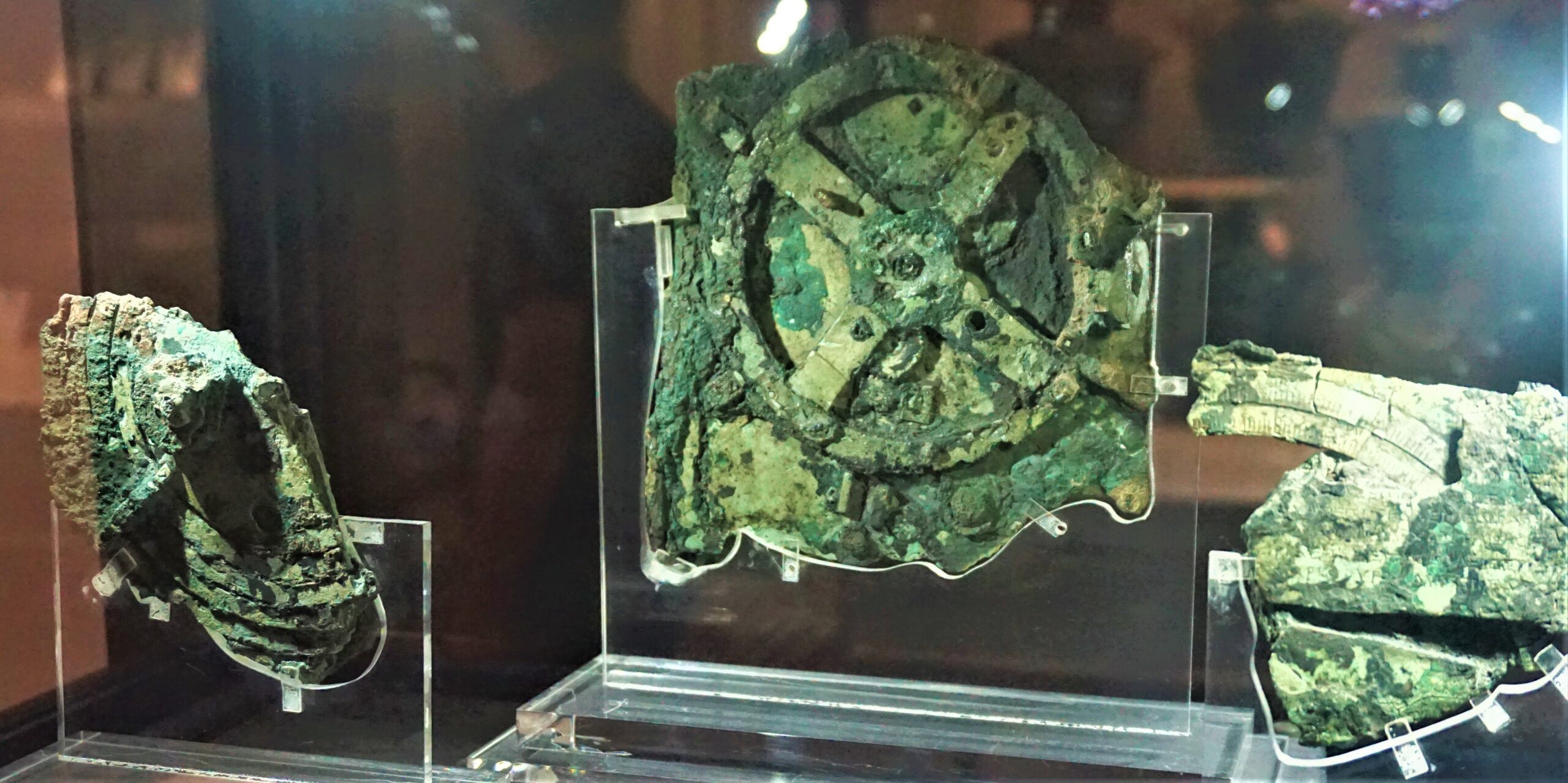
The Antikythera Mechanism, built around 100 BCE, stands as a testament to the advanced knowledge of ancient Greek astronomers and mathematicians. This intricate analog computer comprises over 30 bronze gears, dials, and pointers housed in a wooden case the size of a shoebox. Despite its modest appearance, the mechanism was a sophisticated device used to predict astronomical positions and eclipses.
Discovered in a shipwreck off the coast of Antikythera in 1900, this ancient artifact continues to baffle scientists and historians alike. Interestingly, it could track the cycles of the Olympic Games, demonstrating its multifaceted utility.
Today, it is showcased in the National Archaeological Museum in Athens, where it serves as a symbol of ancient technological prowess. Imagine a timepiece that tells time and forecasts celestial events with precision and accuracy.
Roman Concrete: The Indestructible Building Material

Roman concrete, renowned for its durability and strength, has stood the test of time in iconic structures like the Pantheon and aqueducts. Unlike modern concrete, which often deteriorates over the years, Roman concrete actually strengthens over time due to a chemical reaction with seawater. This unique property has been attributed to the incorporation of volcanic ash, which creates a crystalline structure when exposed to seawater, providing immense longevity.
Additionally, the Pantheon’s unreinforced concrete dome remains the largest of its kind, showcasing the Romans’ unparalleled engineering skills. Scientists are still studying its composition to unlock the secrets of its longevity, hoping to replicate its resilience in modern construction.
Can you imagine buildings today that could last for millennia without needing significant repairs? Roman concrete represents a triumph of ancient technology engineering that continues to inspire architects and builders around the world.
Greek Fire: The Secret Weapon of Byzantium

Greek fire, developed by the Byzantine Empire in the 7th century, was a fearsome incendiary weapon that could burn even on water. Its exact composition remains a mystery, but its devastating power was undeniable. Imagine naval battles where ships were engulfed in flames, with no escape from the relentless inferno. This weapon was crucial in defending Constantinople during sieges, where it was launched from siphons mounted on ships and walls. Historical accounts describe the fire clinging to targets and being nearly impossible to extinguish.
Greek fire struck fear into the hearts of enemies and ensured Byzantine naval supremacy for centuries. The formula for Greek fire was a closely guarded state secret, and despite numerous attempts to replicate it, the exact ingredients and method remain lost to history, shrouded in secrecy like an ancient alchemical recipe.
Damascus Steel: The Legendary Swordsmith’s Secret

Damascus steel, originating from the Middle East, was prized for its exceptional strength and sharpness in ancient times. Swords forged from Damascus steel were revered for their ability to slice through armor effortlessly. The secret behind Damascus steel’s legendary properties lies in its unique composition and intricate patterns, created through a process of repeated folding and hammering.
These blades featured distinctive water-like patterns, known as “Damascus patterns,” which were not just aesthetic but also indicative of the metal’s superior quality. While modern metallurgists have attempted to replicate Damascus steel, none have matched the ancient swordsmiths’ quality and craftsmanship, keeping the exact methods and materials used a mystery.
Imagine wielding a blade that cuts through metal and retains its edge through countless battles. While modern metallurgists have attempted to replicate Damascus steel, none have matched the ancient swordsmiths’ quality and craftsmanship.
Archimedes’ Screw: Ancient Technology Innovation in Water Management

Invented by the Greek mathematician Archimedes, the screw-shaped device known as Archimedes’ Screw revolutionized water transportation and irrigation systems in ancient times. This ingenious contraption was used to lift water from lower levels to higher elevations, making it invaluable for agricultural irrigation and drainage in regions with water scarcity.
Remarkably, Archimedes’ Screw is still used today in various forms, from irrigation systems to modern sewage treatment plants. Its simple yet effective design, which can be operated manually or powered by wind, exemplifies how ancient innovations continue to provide sustainable solutions for contemporary challenges.
Imagine the impact of such a simple yet effective technology on modern-day irrigation systems, providing sustainable water management solutions in arid regions. Archimedes’ Screw remains a testament to the brilliance of ancient technology engineering, with its principles still applied in various forms today.
Inca Stonework: The Perfection of Precision Masonry

The precision and craftsmanship of Inca stonemasonry, exemplified in structures like Machu Picchu, continue to astound engineers and architects. Without the use of mortar, Inca builders seamlessly fit massive stone blocks together with such precision that not even a knife blade can pass through the joints.
This remarkable feat of engineering allowed Inca structures to withstand centuries of earthquakes and weathering, a testament to their advanced understanding of stonecutting techniques. Intriguingly, the Inca used a method called “ashlar masonry,” where stones were precisely cut to fit together tightly without the need for mortar, allowing the walls to flex during seismic activity, enhancing their durability.
Imagine buildings today constructed with such precision and durability, defying the passage of time with their timeless elegance. Inca stonework stands as a marvel of ancient craftsmanship, inspiring awe and admiration in all who behold it.
Chinese Seismoscope: Early Earthquake Detection

Invented by the Chinese polymath Zhang Heng in 132 CE, the seismoscope was an early earthquake detection device that showcased ancient China’s advanced scientific knowledge. Using a complex system of levers and pendulums, the seismoscope could accurately detect the direction of an earthquake’s epicenter, providing valuable early warning signals to mitigate disaster.
Interestingly, the device was designed to drop a bronze ball from one of eight dragon-headed tubes into a corresponding frog-mouthed container, indicating the direction of the seismic activity. This ingenious design highlighted the ancient Chinese’s deep understanding of physics and engineering, marking a significant milestone in the history of seismology.
Think of the potential impact of such early warning systems in modern earthquake-prone regions, saving lives and minimizing damage through timely evacuation measures. While the exact mechanisms of Zhang Heng’s seismoscope remain a subject of debate, its historical significance as an early seismic detection device cannot be overstated.
Baghdad Battery: An Enigmatic Electrochemical Mystery

The Baghdad Battery dates back to around 250 BCE. It is a set of artifacts resembling clay jars with copper cylinders and iron rods inside. While its exact purpose remains a subject of debate among historians and archaeologists, some theories suggest it may have been used as a primitive battery for electroplating. If true, this would imply that ancient civilizations were capable of electrochemical processes centuries before the advent of modern batteries.
Additionally, the jars were discovered near ancient temples, leading to speculation that they might have been used in religious ceremonies or for medical purposes. The Baghdad Battery challenges conventional notions of ancient technology, leaving us with tantalizing questions about the extent of ancient knowledge and innovation.
Imagine ancient civilizations harnessing electricity for metallurgical processes and other applications centuries before the advent of modern batteries. The Baghdad Battery challenges conventional notions of ancient technology, leaving us with tantalizing questions about the extent of ancient knowledge and innovation.
Lycurgus Cup: Ancient Glass with Color-Changing Magic
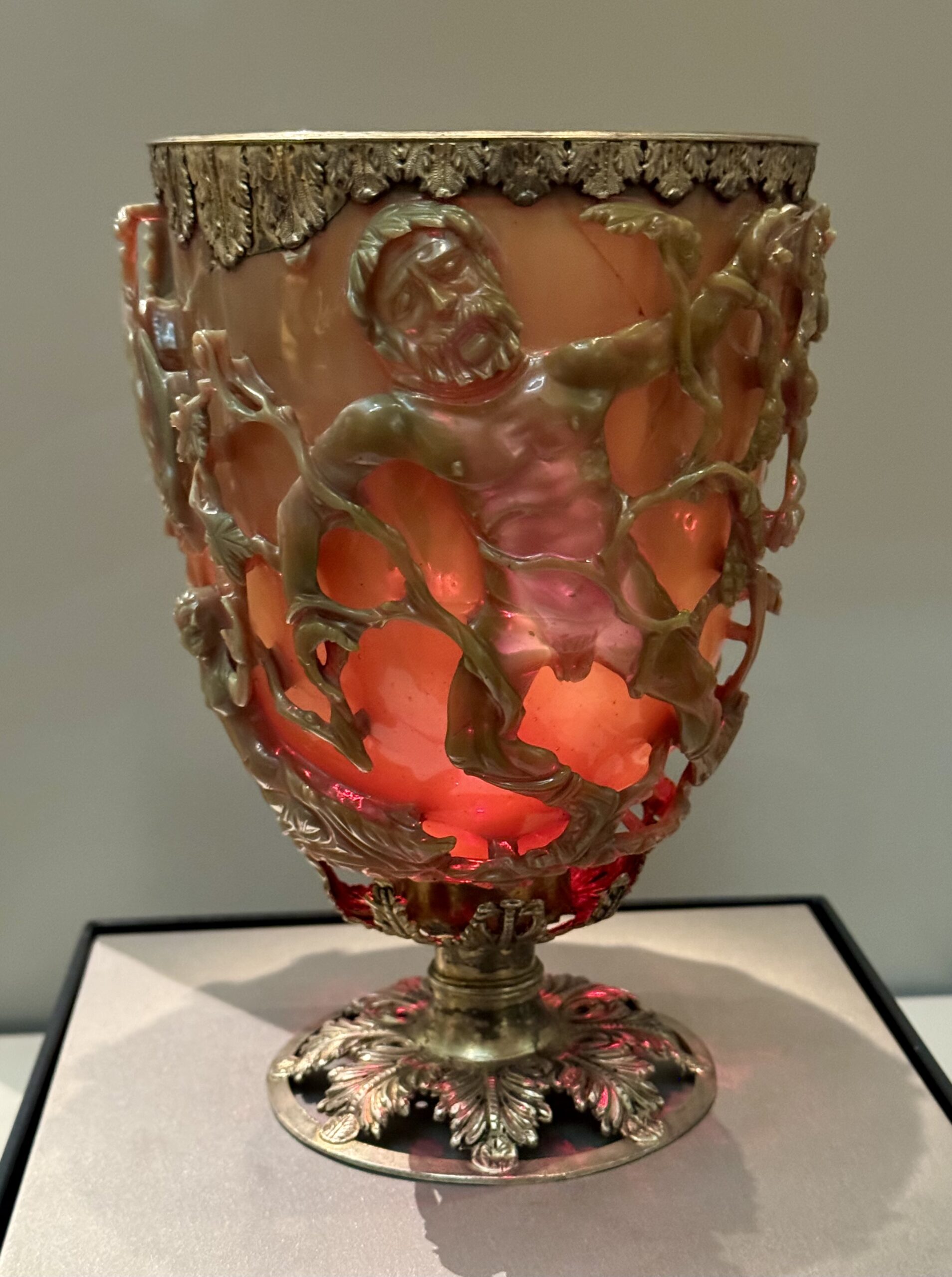
Dating back to the 4th century CE, the Lycurgus Cup is a Roman glass goblet renowned for its remarkable color-changing effect when illuminated from behind. This stunning optical phenomenon, attributed to nanoparticles embedded in the glass, has inspired modern research in nanotechnology.
The cup appears green in normal light but glows a vibrant red when backlit, demonstrating the ancient Romans’ sophisticated understanding of light and materials. Intriguingly, this effect was achieved using a precise mix of gold and silver particles, suspended in the glass matrix, showcasing the advanced materials science practiced by ancient craftsmen. The Lycurgus Cup stands as a testament to the advanced glassmaking techniques of ancient Rome, captivating observers with its mesmerizing interplay of colors and light.
Try to imagine the applications of such light-manipulating materials in modern optics and display technologies, offering unprecedented control over color and light. The Lycurgus Cup stands as a testament to the advanced glassmaking techniques of ancient Rome, captivating observers with its mesmerizing interplay of colors and light.
The Great Pyramid of Giza: Monumental Mysteries of Ancient Technology in Egypt
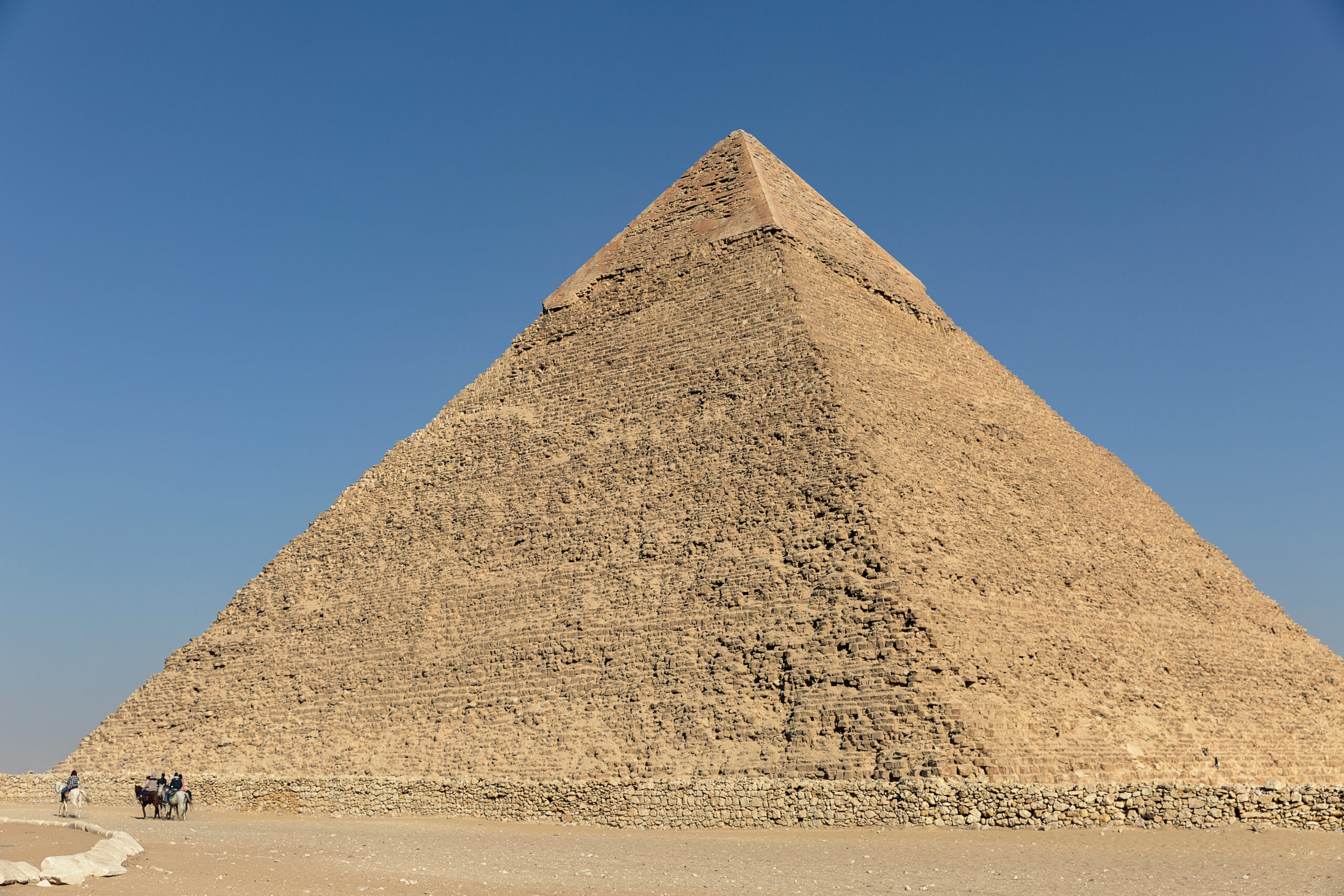
The Great Pyramid of Giza, one of the Seven Wonders of the Ancient World, continues to baffle scientists with its precision engineering and astronomical alignment. Despite being constructed over 4,500 years ago, many aspects of its construction techniques remain a mystery, fueling speculation about the ingenuity of ancient Egyptian civilization.
The pyramid’s base is a near-perfect square, with an error margin of just 58 millimeters, highlighting the Egyptians’ unparalleled architectural skills. Additionally, the pyramid aligns precisely with the cardinal points and certain celestial bodies, suggesting a sophisticated understanding of astronomy and geodesy. The Great Pyramid of Giza remains an enduring symbol of human achievement, inspiring awe and wonder in all who contemplate its mysteries.
Think of the logistical challenges of constructing such a monumental structure with primitive tools and technology, raising questions about the true capabilities of ancient engineers and architects. The Great Pyramid of Giza remains an enduring symbol of human achievement, inspiring awe and wonder in all who contemplate its mysteries.
Nazca Lines: The Enigmatic Geoglyphs of Peru

Etched into the desert floor of southern Peru, the Nazca Lines are massive geoglyphs believed to have been created between 500 BCE and 500 CE. Due to their sheer scale and precision, these enigmatic figures depict various animals, plants, and geometric shapes, which have puzzled researchers for centuries. The lines are so vast that they can only be fully appreciated from the air, leading to speculation about how and why they were created.
One intriguing theory suggests they were astronomical calendars or part of water cult rituals aimed at invoking rain. The Nazca Lines stand as a testament to ancient civilizations’ creativity and artistic prowess, leaving us to marvel at the enduring legacy of their enigmatic creators.
What could be the purpose behind these mysterious designs, with theories ranging from astronomical calendars to ritualistic symbols? The Nazca Lines stand as a testament to ancient civilizations’ creativity and artistic prowess, leaving us to marvel at the enduring legacy of their enigmatic creators.
The Shroud of Turin: Mysteries of a Sacred Relic

Some believe the Shroud of Turin is the burial cloth of Jesus Christ. It is a linen cloth bearing the faint image of a man with wounds consistent with crucifixion. Despite extensive scientific analysis, the shroud’s origins and the image’s nature remain hotly debated, fueling centuries of speculation and controversy.
Radiocarbon dating has produced conflicting results, with some tests suggesting it dates back to the Middle Ages, while others propose an earlier origin. The image itself, a negative photogenic imprint, remains unexplained, adding to the shroud’s mystique. The Shroud of Turin continues to captivate believers and skeptics alike, serving as a profound symbol of faith and mystery.
What would be the implications if the shroud were indeed authentic, offering tangible evidence of Jesus’ crucifixion? The Shroud of Turin continues to captivate believers and skeptics alike, serving as a profound symbol of faith and mystery.
The Coral Castle: Edward Leedskalnin’s Monument to Mystery

Located in Florida, the Coral Castle is a mysterious megalithic structure built by Edward Leedskalnin, an eccentric Latvian immigrant, in the early 20th century. Comprising massive coral blocks weighing several tons each, the castle’s construction methods remain a subject of speculation and intrigue.
Leedskalnin claimed to have single-handedly carved and assembled the stones using mysterious methods he learned from studying ancient Egyptian texts. Remarkably, he worked primarily at night and never allowed anyone to observe his process, further deepening the mystery. The Coral Castle stands as a testament to one man’s singular vision and the enduring allure of unsolved mysteries, drawing visitors and researchers eager to uncover its secrets.
Imagine the sheer determination and ingenuity required to construct such a monumental feat of engineering with limited resources and manpower. The Coral Castle stands as a testament to one man’s singular vision and the enduring allure of unsolved mysteries.
The Georgia Guidestones: Messages from a Monumental Mystery

Erected in 1980 in Elbert County, Georgia, the Georgia Guidestones were granite monoliths featuring ten guidelines inscribed in multiple languages. Often referred to as the “American Stonehenge,” the origin and purpose of the Guidestones remain shrouded in mystery, leading to speculation about their significance and meaning. The guidelines include calls for population control and environmental conservation, sparking various conspiracy theories.
The anonymous sponsors, known only by the pseudonym R.C. Christian, further add to the intrigue. Despite their recent destruction, the Georgia Guidestones continue to fascinate and provoke debate, symbolizing the enduring human quest for understanding and order.
What motivated the construction of these enigmatic monuments? Theories range from environmental conservation to New World Order agendas.
The Voynich Manuscript: A Cryptic Enigma

Dating back to the 15th century, the Voynich Manuscript is filled with bizarre illustrations and an unknown script that has baffled cryptographers and linguists for centuries. Despite numerous attempts at decipherment, the Voynich Manuscript remains undeciphered, fueling theories about its origins and purpose.
Some believe it is a pharmacopoeia or a treatise on medicinal herbs, while others suggest it may be an elaborate hoax. The manuscript contains drawings of unidentified plants, astronomical diagrams, and strange human figures, adding to its mystique. The Voynich Manuscript continues to inspire fascination and intrigue, serving as a tantalizing puzzle waiting to be solved.
Imagine the secrets that could be unlocked if the manuscript were decoded, offering insights into ancient technology, knowledge or lost civilizations. The Voynich Manuscript continues to inspire fascination and intrigue, serving as a tantalizing puzzle waiting to be solved.
The Piri Reis Map: Ancient Cartography at Its Finest
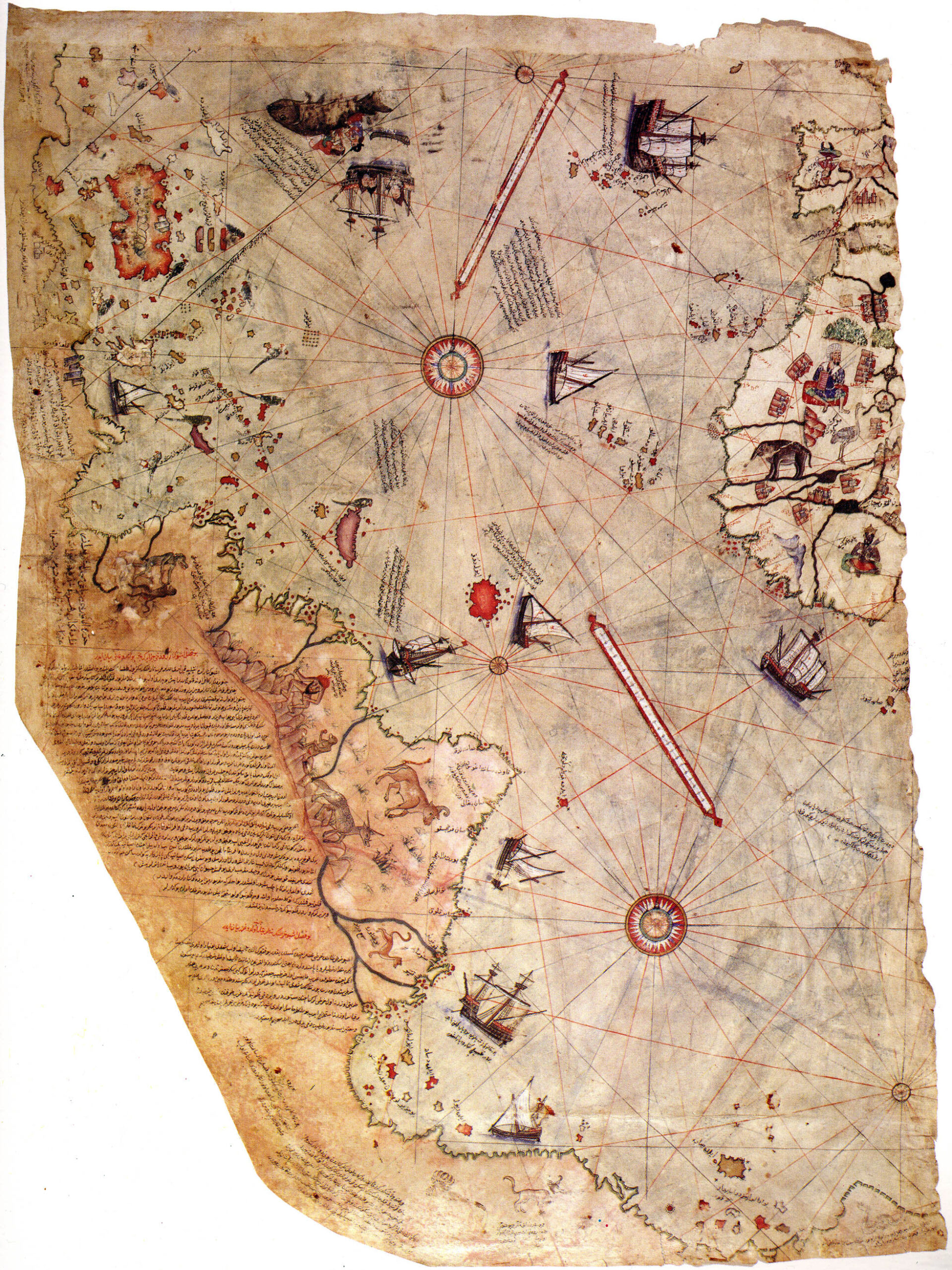
Created by Ottoman cartographer Piri Reis in 1513, the Piri Reis Map depicts parts of Europe, Africa, and the Americas with remarkable accuracy, including features that were unknown to Europeans at the time. The map’s precision and inclusion of Antarctica have sparked speculation about ancient seafaring and lost civilizations.
Some theories suggest it may have been based on earlier maps from ancient civilizations, possibly even dating back to the time of Alexander the Great. The Piri Reis Map is a testament to ancient civilizations’ ingenuity and navigational prowess, offering tantalizing glimpses into the past and challenging our understanding of historical geography.
What was the knowledge and expertise required to create such a detailed and comprehensive map in the 16th century, long before modern cartography techniques? The Piri Reis Map is a testament to ancient civilizations’ ingenuity and navigational prowess, offering tantalizing glimpses into the past.

